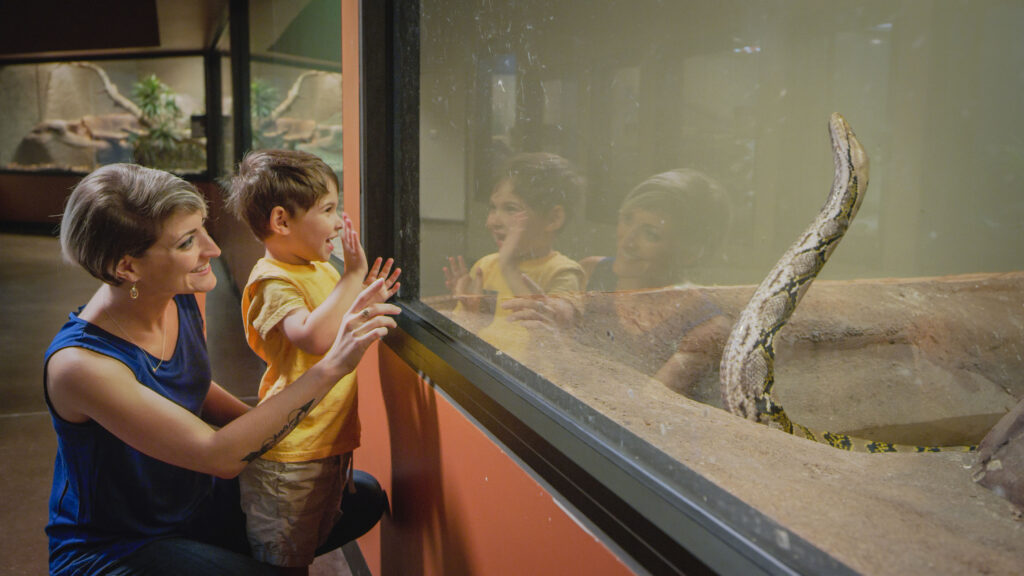That’s Reticulus
Slither into the World of Reptiles and you’ll see animals big and small, from the tiniest of frogs and turtles to our seven-foot-long crocodiles. While the size of our crocodiles may seem impressive, the longest reptile you’ll see on your visit to the reptile building is our pair of reticulated pythons, the topic of this month’s Tales of the Tails blog.
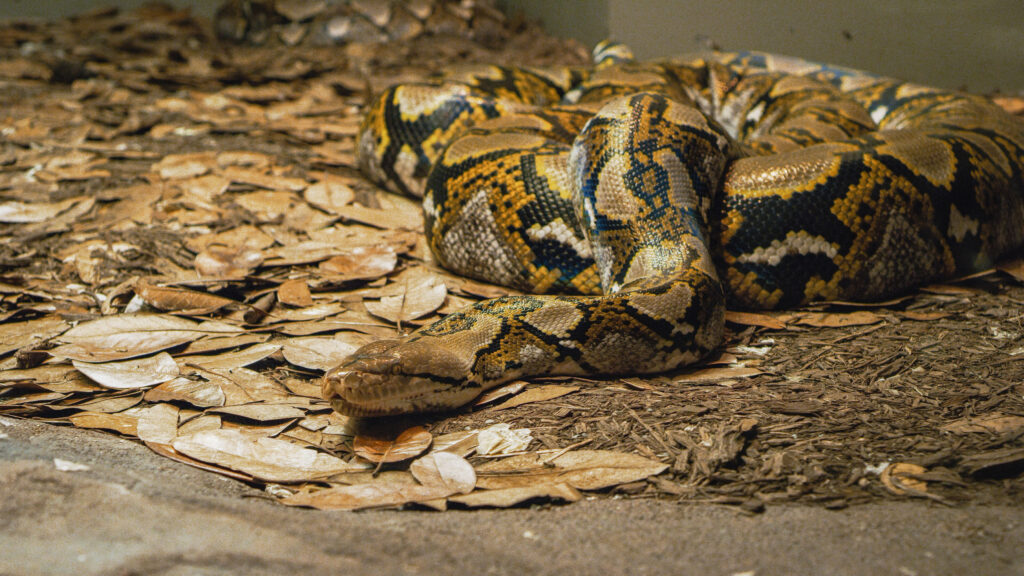
Reticulated pythons (Python reticulatus) are one of 33 different species of pythons, which is a type of snake and more specifically a constrictor, meaning they suffocate their prey by wrapping tightly around it. Like most snakes, these pythons don’t chase after their prey but instead wait and ambush at the perfect moment, then once the snake is sure its prey is no longer alive, the snake will swallow its meal whole. Prey for reticulated pythons depends on the size of the snake, but can be anything from rodents, birds, lizards, and small mammals like monkeys and pigs, or antelope for larger snakes. Pythons generally won’t eat anything that can’t fit in the widest section of their body, and chewing their food to ease digestion is also not an option.
If you can’t tell by their diet, these snakes can be really big! Reticulated pythons are considered to be the largest python species, with the longest snake under human care recorded to be over 25 feet and reports of reticulated pythons reaching up to 33 feet long in the wild. They are typically tan, black and brown in color and have a black line of scales that runs from the tip of the nose to the end of the tail.
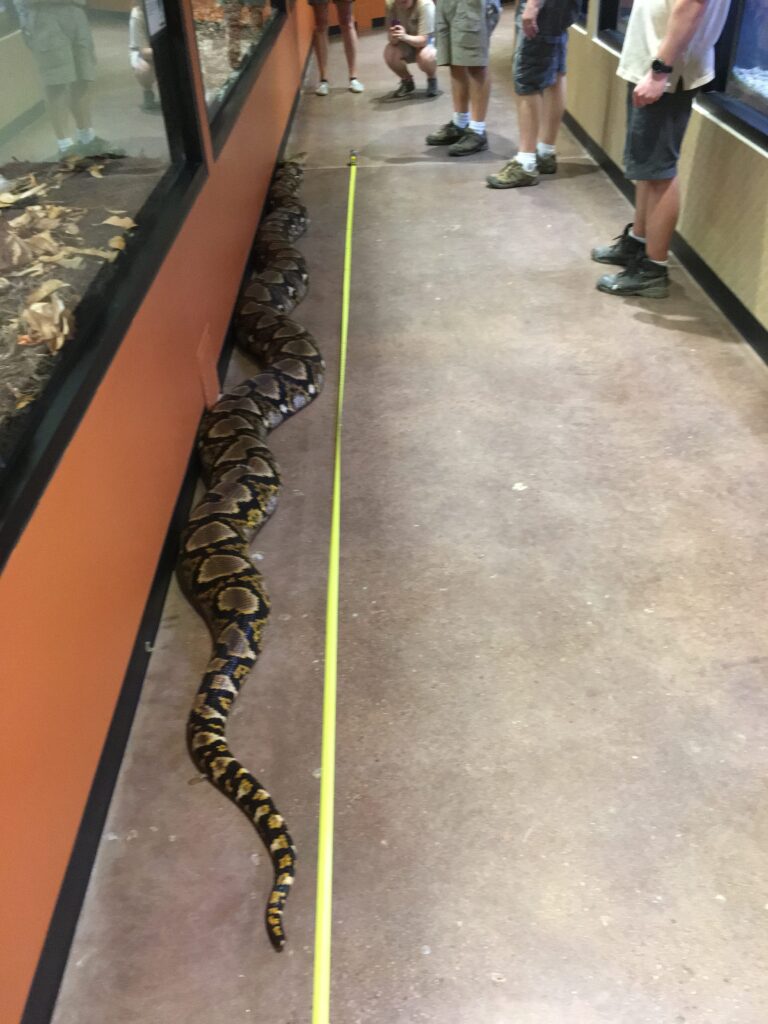
Reticulated pythons can be found in tropical rainforests, wetlands and grasslands in Southeast Asian countries such as Bangladesh, India, Cambodia, Indonesia, Philippines, Singapore, Thailand and Vietnam. Juveniles of this python species tend to be more arboreal, meaning they can be found hanging out in trees. As they grow older, the mature individuals typically spend more time on the ground, although researchers have seen some older and larger animals in trees
This species is listed as Least Concern on the International Union for Conservation of Nature and Natural Resource’s Red List (IUCN). It is illegal to catch or hunt the snakes in their native countries, however they are often still found as pets around the world. Around 180,000 individuals are illegally captured every year for multiple reasons including the illegal pet trade and for harvesting of their parts for food and medicinal purposes. Poaching for their skins to make clothing and apparel is common and people often use vehicles to run over and kill reticulated pythons on purpose while they are crossing roads. Indonesia, Malaysia, and Vietnam were responsible for exporting 4 million reticulated python snake skins between 2002-2012 and up to 75% of them came from wild collection.
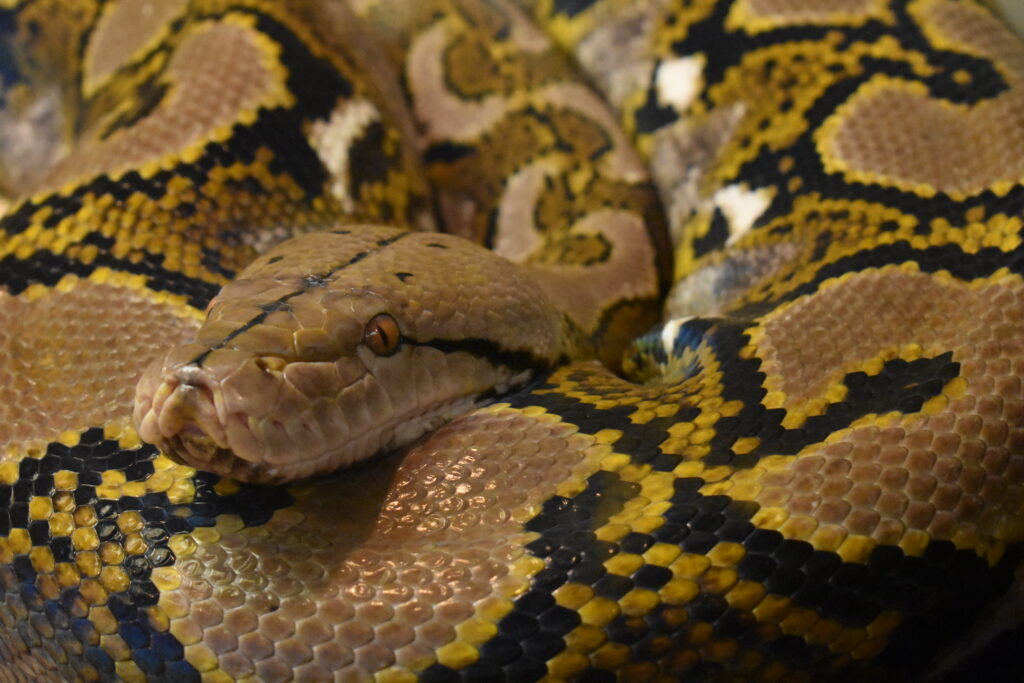
Laws in some of their native countries aid in protecting reticulated pythons and helping populations remain stable, but zoological organizations across the world are also compelled to help the massive creatures. After reviewing the species situation in the wild, the Association of Zoos and Aquariums (AZA) has added the species to the list of potential future candidates for the Species Survival Program® (SSP). This program oversees and manages species’ population in zoos by pairing individuals and monitoring breeding to maximize genetic diversity and long-term sustainability of populations. The SSP also ensures the species’ survival in the wild through supporting conservation efforts such as programs to combat poaching and the illegal pet trade.
Two female reticulated pythons share an exhibit at the Virginia Zoo. It is estimated they were both hatched in the spring of 2012. Before arriving at the Zoo on January 30, 2014, the pair lived at Clyde Peeling’s Reptiland in Pennsylvania. While they don’t have official names, they are easy to tell apart by size.
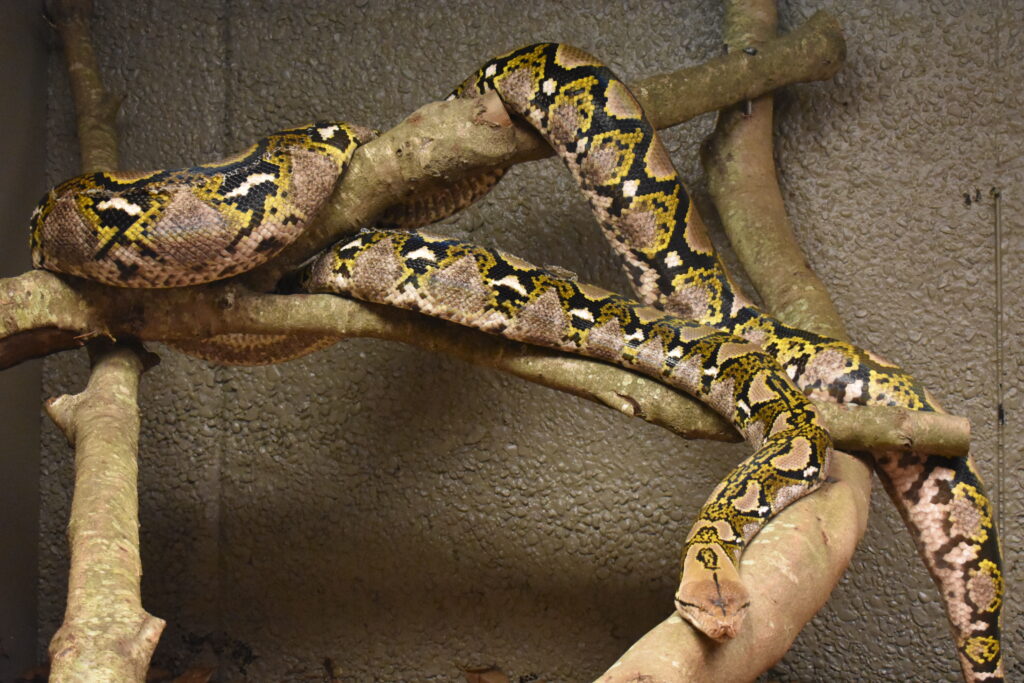
The smaller of the two measures 15 feet long while the larger snake measures a whopping 19 feet! While it may seem like an animal of this size also has a big stomach, the reticulated pythons at the Zoo eat every two to eight weeks, depending on their activity. The smaller python typically eats 10 pounds of thawed frozen rabbit while the larger snake is fed 20-30 pounds at a time.
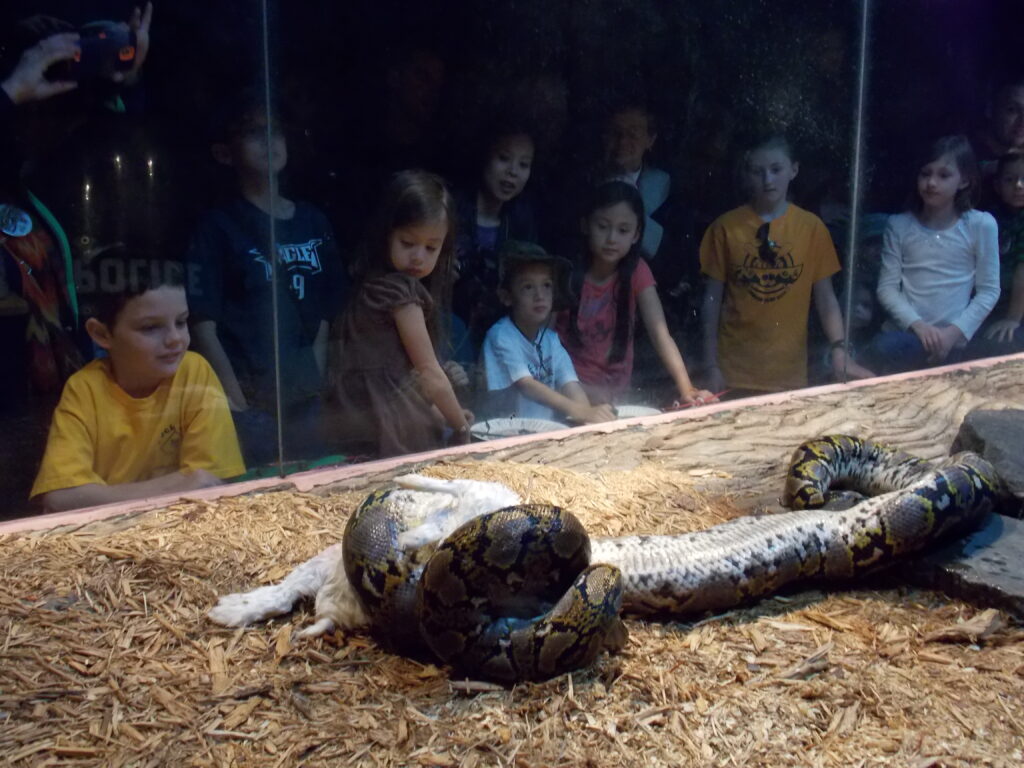
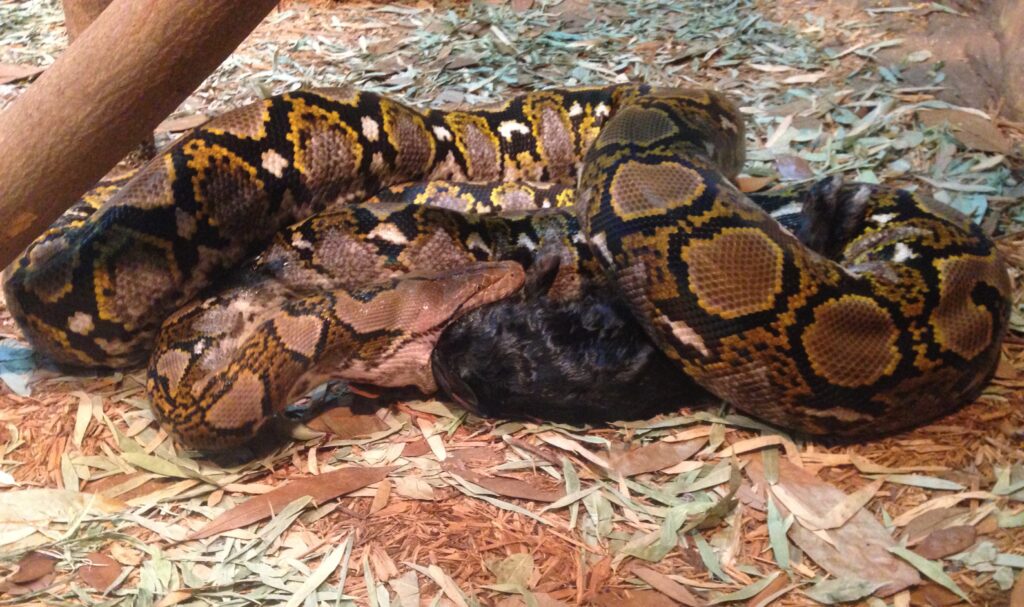
The reticulated pythons are most active when Keepers spray down their enclosure and change the pool water. According to their Keepers they are usually placid, but the larger female has a tendency to become “hangry” when it’s time to eat. Keepers also say these snakes are as strong as they are beautiful and guests shouldn’t be scared of them because of their daunting size. Pythons, along with other snake species, do a great job in helping to keep rodent populations in check and are an important part of their ecosystem.
The World of Reptiles is the perfect place to go when the temperatures drop to experience our animals in the comfort of a heated environment, so be sure to visit the giant gals on your next visit to the Zoo. You may even stand face-to-face with one of them!
